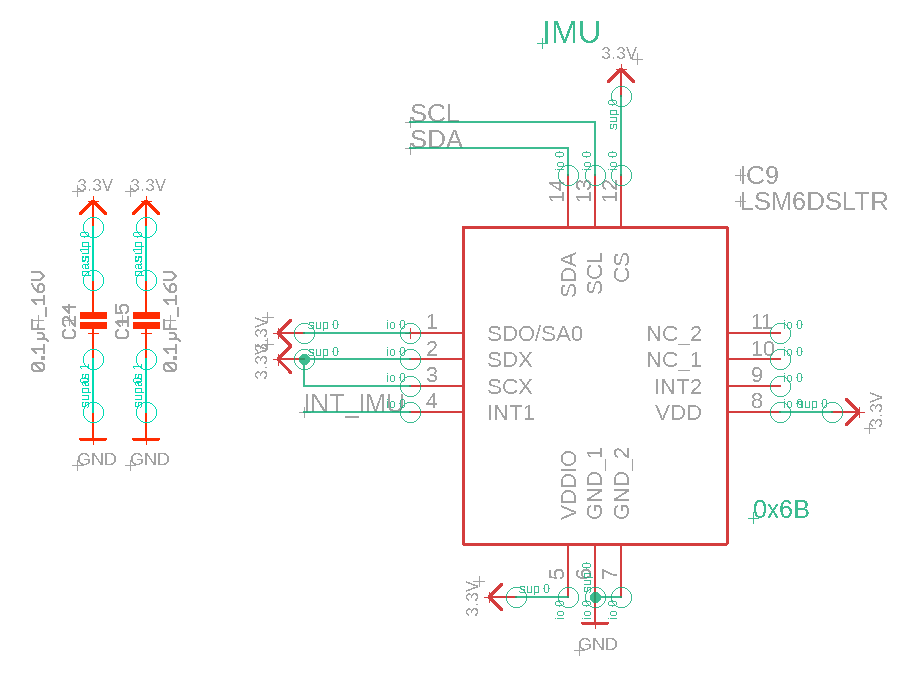So I designed this custom PCB with a ESP32 and an IMU ST LSM6DSL over i2c. Everything is running at 3.3V.
However, when I initialise the IMU in the firmware and start reading it in normal mode at 104Hz (which is much lower than the 6.6kHz it can do), the IMU gets really hot after a minute!
I carefully checked the hardware: every pin is as it should be according to the datasheet. There ways no layout example in it (or on the product page) though so I did the best I could in my busy layout.
Any idea why it does that? Has anyone experienced similar issues, maybe with one of the other IMUs from the ST family? (LSM6DSM, LSM6DSO, LSM6DSOX, LSM6DS33, ISM330DLC, etc).
Here's a screenshot of my schematic and layout. Shall I increase the trace width or the value of the capacitors? Or is the problem purely in firmware?
Thanks all




